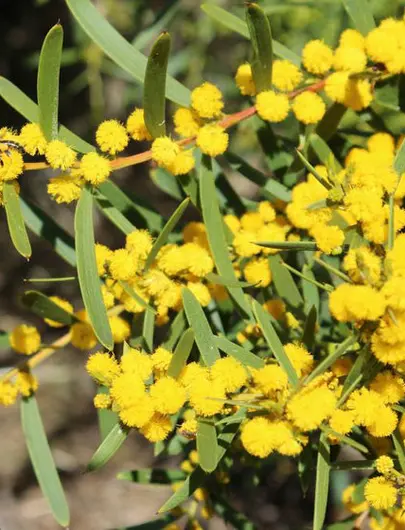Some unique, local plant-based superfoods are emerging in the health food market, and while they may be new to us, these plants have been growing in Australia for over 50,000 years, sustaining Aboriginal people as sources of food and traditional medicine. Here’s what we’ve learnt about the ones we’ve been trying at GoodnessMe Box HQ.
1) Wattleseed
A staple of the Australian Indigenous diet for more than 40,000 years, the sturdy wattleseed, protected by its hard husk, can outstand harsh weather conditions, and so provided carbohydrate and protein during periods of drought.
Once roasted and ground, the wattleseed husk develops a nutty, chocolate-y flavour, and an aroma and rich-brown colour that reminds me of roasted coffee.
Due to it’s complex flavours, wattleseed works well in both sweet and savoury dishes; Try it in The Australian Superfood Co’s Wattle Seed Husk, Cacao Raw Bar for a healthy snack or dessert that tastes like a chocolate brownie. Or, combine culinary wattleseed with spices like coriander when seasoning your favourite meat or fish for a BBQ flavour – Delicious with meaty fish like tuna.
2) Lemon Myrtle
The ‘queen’ of the lemon herb family, sweet and citrusy lemon myrtle is not just for skin care or your oil burner - The dark green fresh or dried leaves of this Australian native shrub can be used as a refreshing, uplifting herbal tea infusion or to enhance the flavour of food, imparting a lovely lemon taste and aroma to your cooking; A good bay leaf substitute in marinades for meats, as well as in fish dishes or meat-based stews and soups.
Significantly more concentrated in fragrant ‘citral’ than any other plant, this oil is known for its potential antimicrobial and antifungal properties; Traditionally the leaves, comprised of 90% citral, are crushed and used as a wound-healing paste. Amongst its other nutrients, lemon myrtle is rich in lutein for eye health, as well as vitamins A and E, both of which have antioxidant potential.
3) Kakadu Plum
Also called ‘gubinge’ (as well as the Billy Goat Plum or ‘Murunga’), the yellow-to-pale green Kakadu Plum is the size of an almond and the richest natural source of vitamin C, containing 100 times more of this antioxidant than an orange. The Kakadu Plum is also a good vegetarian source of iron; Worth noting, seeing that vitamin C enhances the absorption of iron from plant-based foods.
Tart in flavour and with an aroma comparable to musk and cooked citrus, apples and pears, Kakadu Plum is delicious paired with sweeter, richer fruits, like dates, coconut and mango in the Desert Tribe Tropical Raw Bar from The Australian Superfood Co.
4) Riberry
This sweet, pear-shaped berry is a similar size to a redcurrant, pink-red in colour and cinnamon and clove-like in flavour. In full bloom, the riberry tree reminds me of a Christmas tree with its cheerful contrast of green leaves and abundant red berries.
Traditionally loved by Aboriginal children for their natural sweetness (Unlike some other bush fruits, you would happily eat these straight-up), and utilised by adults as traditional ‘medicine berries’, riberries are three times higher in folate (for growth and development) than blueberries.
They’re also a good plant source of calcium and are rich in anthocyanin, a flavonoid (plant compound) which gives berries their blue or red pigments, and which has a range of potential health benefits, such as antioxidant potential and anti-inflammatory effects - although more research is needed.
5) Davidson Plum
This deep purple-skinned, blood red-fleshed fruit looks quite quirky during cultivation, growing in clusters from its tree’s thin, straight trunk. Bite straight into one of these though and your lips will pucker; Sour, astringent and slightly bitter, the Davidson Plum is easier on the palate when balanced with sweetness – such as in a jam or chutney.
It’s also now available as an air-dried powder, delicious stirred through yoghurt or added to homemade ice cream or cakes for a tart, fruity flavour and rose hue – an easy way to reap the benefits of this fruit, rich in nutrients like lutein, anthocyanin and of course fibre.
The Australian Superfood Co aims to share with the world, Indigenous Australians' traditional knowledge and expertise about the cherished fruits of their land. To find out more about their raw superfood bar range visit www.austsuperfoods.com.au

